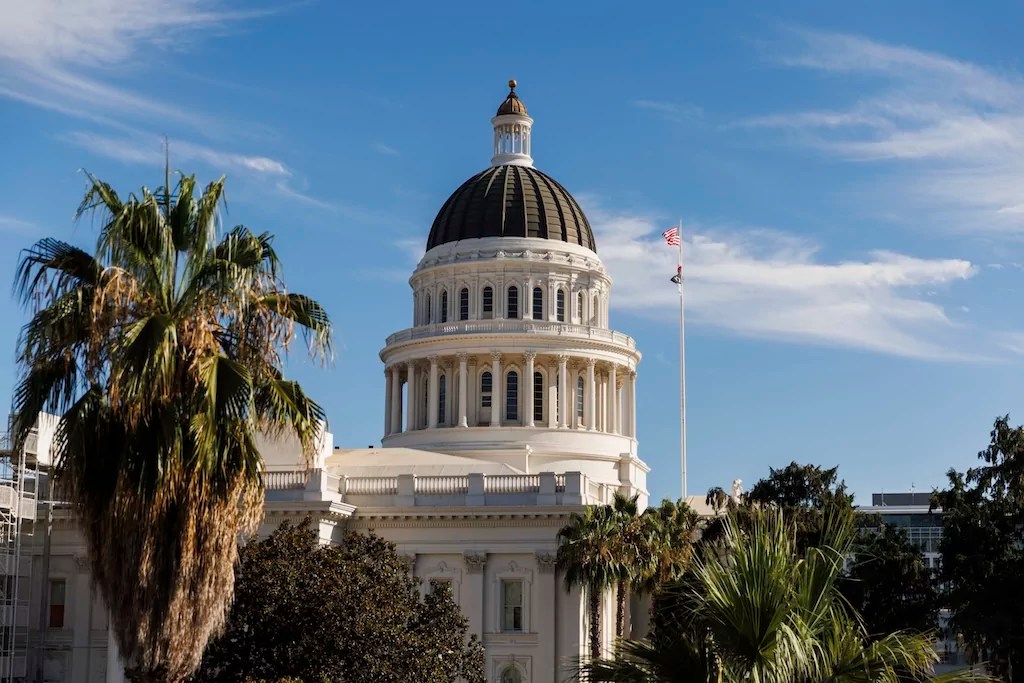‘Unflinching’ Fed panel report reveals causes of Silicon Valley Bank’s downfall
Silicon Valley Bank’s recent failure, which unleashed a banking crisis and sent shockwaves through the economy, was ultimately caused by poor management and weak federal oversight, according to a new government report.
The findings, outlined in a more than 100-page report released by the Federal Reserve on April 28, have renewed calls from policymakers for stronger bank regulations — as well as criticism for loosening supervision in recent years.
SVB COLLAPSE: FED SAYS IT FAILED TO ‘TAKE FORCEFUL ENOUGH ACTION’
“Silicon Valley Bank (SVB) failed because of a textbook case of mismanagement by the bank,” read the report led by Michael S. Barr, the Fed’s vice chairman for supervision. “Its senior leadership failed to manage basic interest rate and liquidity risk. Its board of directors failed to oversee senior leadership and hold them accountable.”
But Silicon Valley Bank’s leaders were not alone in their mistakes, Barr wrote. The Fed, the bank’s main federal supervisor, also fell short. “Federal Reserve supervisors failed to take forceful enough action,” he said.
By the time the California lender failed, it had amassed “31 unaddressed safe and soundness supervisory warnings — triple the average number of peer banks,” the Fed said in a statement released alongside the report.
The highly critical review reveals in the greatest detail yet the years of internal and regulatory failures that led to the third-biggest bank collapse in the history of the United States — one that forced rare action by federal authorities to contain the rapidly spreading damage. Even so, the damage proved contagious, and other midsize banks have since fallen.
Barr said the findings, compiled in the weeks after Silicon Valley Bank crashed in March, show the Fed “must strengthen [its] supervision and regulation,” including the “speed, force, and agility of supervision,” and expand tougher rules to more banks. “This review represents a first step in that process — a self-assessment that takes an unflinching look at the conditions that led to the bank’s failure, including the role of Federal Reserve supervision and regulation,” he said.
One key factor in Silicon Valley Bank’s failure was a 2018 bill rolling back some of the Dodd-Frank rules that Congress and President Barack Obama enacted in the aftermath of the 2008 financial crisis, Barr’s review found: “The Board’s tailoring approach in response to the Economic Growth, Regulatory Relief, and Consumer Protection Act (EGRRCPA) and a shift in the stance of supervisory policy impeded effective supervision by reducing standards, increasing complexity, and promoting a less assertive supervisory approach.”
Sen. Elizabeth Warren (D-MA), who has long warned of the potential consequences of the 2018 legislation, called the report “an unflinching assessment of SVB’s implosion, demanding the Fed immediately adopt stricter bank oversight and Congress swiftly strengthen bank regulations to prevent another crisis.”
Warren, a member of the Senate Banking Committee, also took aim at Fed Chairman Jerome Powell, whom she has lambasted in the past, and said that he “failed in his responsibility to supervise and regulate banks that posed a systemic risk to our economy.”
Powell, for his part, has said he accepts the report’s findings. “I welcome this thorough and self-critical report on Federal Reserve supervision from Vice Chair Barr,” he said in a statement following the report’s release. “I agree with and support his recommendations to address our rules and supervisory practices, and I am confident they will lead to a stronger and more resilient banking system.”
The report reveals that a host of problems at Silicon Valley Bank (its rapid growth, hyperfocused business model, and lack of internal safeguards) left the institution particularly vulnerable as the Fed jacked up interest rates in recent months to fight record-high inflation. An acute focus on short-term profits, as well as the bank’s internal monitoring blind spots, also contributed to its stunning downfall.
Founded in 1983 and headquartered in California, Silicon Valley Bank’s holding company, SVB Financial Group, had “approximately $212 billion in total assets when it failed in March 2023,” according to the report, and primarily served companies in the tech and science industries.
“Between 2019 and 2021, SVBFG tripled in size as it benefited from rapid deposit inflows during rapid venture capital (VC) and technology sector growth in a period of exceptionally low-interest rates,” the report read. “These deposits were largely uninsured, and SVBFG invested them primarily in securities with longer-term maturities. In 2022, as interest rates began to rise, SVBFG saw deposit outflows and a rapid increase in unrealized losses on those securities.”
“SVBFG’s rapid failure can be linked directly to its governance, liquidity, and interest rate risk-management deficiencies,” it continued. “The full board of directors did not receive adequate information from management about risks at SVBFG and did not hold management accountable.”
In one example of the bank’s transparency problems, its management waited until November 2022 to provide the board with information that “appropriately” illustrated the bank’s liquidity problems “despite deteriorating conditions,” according to the review. The board also “put short-run profits above effective risk management and often treated resolution of supervisory issues as a compliance exercise rather than a critical risk-management issue.”
“Compensation packages of senior management through 2022 were tied to short-term earnings and equity returns and did not include risk metrics,” the report read. “As such, managers had a financial incentive to focus on short-term profit over sound risk management.”
As part of the Fed’s release, it also published typically confidential documents that showed how both the bank’s C-suite and its overseers at the Fed were aware of the company’s troubles years before its collapse. “Due to the exceptional nature of these events, including the failure of SVB and the extraordinary response required by the Federal Reserve, the Board has determined that the release of this information is appropriate, as the substantial public interest outweighs the need to maintain the information’s confidentiality,” the Fed said.
Among those records is a November 2021 letter from the Federal Reserve Bank of San Francisco to Silicon Valley Bank CEO Greg Becker that effectively foreshadowed the bank’s fall. The letter, which summarized the results of a Fed examination of the bank, indicated its “liquidity risk management practices are below supervisory expectations.”
The letter included two “Matters Requiring Immediate Attention,” which the Fed says are “matters of significant importance and urgency that the [Federal Reserve] requires organizations to address immediately.” They can include “matters that have the potential to pose significant risk to the organization’s safety and soundness,” as well as “matters that represent significant noncompliance with applicable laws and regulations.”
Despite the warnings, the bank and supervisors at the Fed were too slow to act, Barr found. “Federal Reserve supervisors did not fully appreciate these vulnerabilities as the firm grew in size and complexity,” the report read. “After risks were identified, supervisors did not take sufficient steps to ensure that SVBFG fixed them in a timely fashion.”
“This reflects a complex combination of many factors within the Federal Reserve, including delays in applying more stringent standards as SVBFG grew rapidly, the resources devoted to SVBFG supervision, an approach that emphasized consensus and the continued accumulation of evidence even as SVBFG deteriorated, and a shift in the stance of supervision policy that was amplified by the COVID-19 pandemic,” it continued.
Two days before its collapse, Silicon Valley Bank announced a plan to restructure its balance sheet in the face of growing problems. A day later, the bank’s clients rapidly withdrew from their accounts, fueling a massive bank run that resulted in it losing more than $40 billion in deposits, according to the report.
“These deposit outflows reflected fundamental concerns about the bank and appear to have been sparked by a number of interrelated factors: heightened uncertainty and changing sentiment around the technology sector; potential negative action from credit rating agencies; and highly correlated withdrawals from SVBFG’s concentrated network of VC investors and technology firms who, fueled by social media, withdrew uninsured deposits in a coordinated manner at an unprecedented rate,” it read.
Bank executives predicted they were at risk of losing more than $100 billion the next day on Mar. 10 — the day the bank failed.
“This deposit outflow was remarkable in terms of scale and scope and represented roughly 85 percent of the bank’s deposit base. By comparison, estimates suggest that the failure of Wachovia in 2008 included about $10 billion in outflows over 8 days, while the failure of Washington Mutual in 2008 included $19 billion over 16 days,” according to the report.
Though Washington Mutual remains the largest bank failure in U.S. history, Silicon Valley Bank ranked second after its March downfall — but not for long. On May 1, First Republic Bank, another California lender, was seized by regulators and replaced SVB in the second spot. It was the third bank collapse since March, when Signature Bank also fell.
CLICK HERE TO READ MORE FROM THE WASHINGTON EXAMINER
Regulators in New York, where Signature was headquartered, recently released a report on the bank’s downfall, finding that it, too, faced liquidity risk problems for years. Meanwhile, in a federal report that echoed the Fed’s findings about Silicon Valley Bank, the FDIC concluded that Signature was plagued by management problems and poor risk management and did not always heed concerns or implement recommendations from regulators.
In the end, all three banks that broke down this year faced a similar problem: a flurry of withdrawals after a tougher economic environment exposed deeper threats.
" Conservative News Daily does not always share or support the views and opinions expressed here; they are just those of the writer."





Now loading...